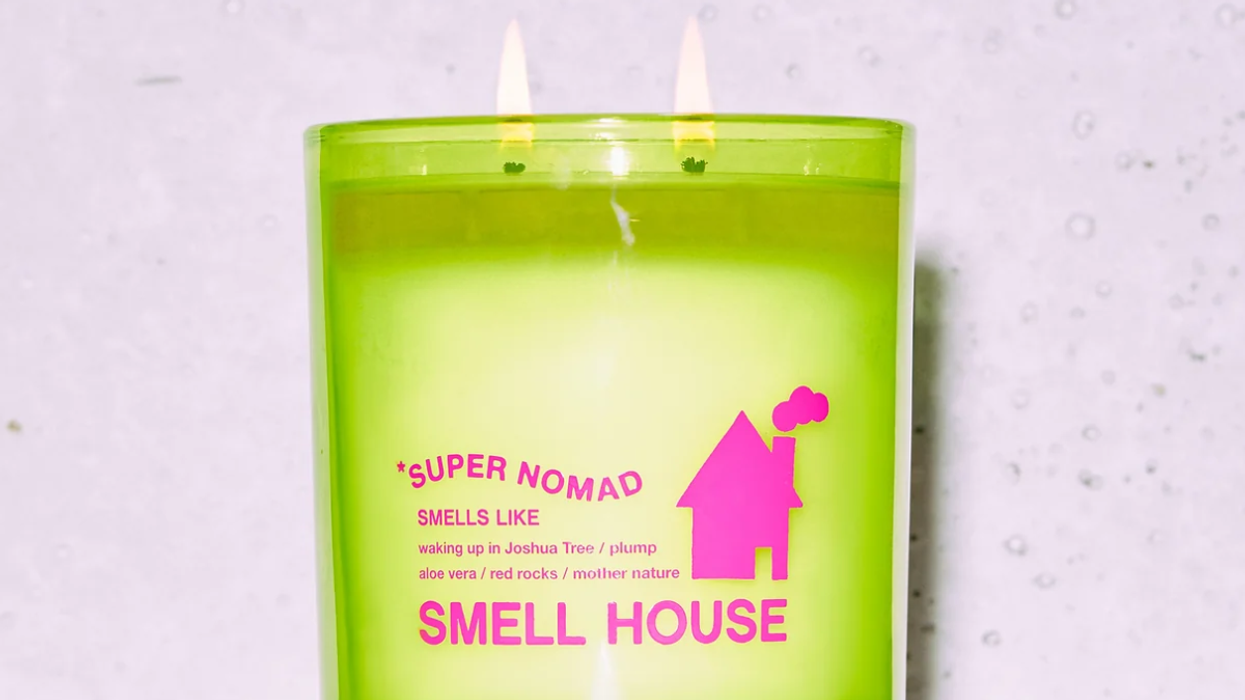Beware of greenwashing.
How to Spot False Eco-Friendly Labels This Earth Day

With Earth Day fast approaching, we’re making a real effort to live a greener lifestyle and we’re starting by taking the time to look more closely at the environmental impact of some of our most-loved everyday products. Unfortunately, finding out which companies and products are safe for the environment is a lot harder than it seems. Even if a company boasts eco-friendly branding on their packaging, website, and social media, it doesn’t automatically mean they’re having a wholly positive effect on the environment. In fact, so many companies are fooling customers into falsely believing that they’re eco-friendly, experts have come up with a specific term to describe the growing problem: greenwashing.

“Greenwashing is the term used to describe when a company tries to present a green, eco-friendly public image but does not actually have a sustainable business model or environmentally friendly policies, practices, or products,” says Aspiration‘s sustainability officer Lily Bowles. “Unfortunately, greenwashing is all around us,” she tells us. Now that consumers are becoming more aware of climate change and environmental issues, shoppers are starting to demand that companies become stewards of the environment and adapt their age-old operations and products to become more eco-friendly. “This is especially true for millennials and Generation Z, which both consider sustainability a priority when shopping; in fact, 58 percent of consumers are even willing to pay more for products from a company known for being environmentally friendly,” says Bowles. While some companies have taken environmentalism to heart and drastically revamped their practices, others have used heightened consumer interest in eco-friendly products as a marketing ploy without putting in the work to make environmentally friendly changes to their company. “These are companies that use language and images to portray themselves as eco-friendly, when in fact they are not — and, in some cases, they even sell products or services that are harmful to the environment,” Bowles explains.
But what exactly can the everyday gal do to spot false eco-friendly labels and weed out greenwashing companies? One easy way to learn more about greenwashing is through Aspiration’s Impact Measurement (AIM) — an easy-to-use online resource that allows customers to track how thousands of well-known and independent companies are helping (or hurting) the planet. Here’s how it works: AIM ranks each company based on how they are affecting people and the planet. People scores reflect metrics like employee pay, access to healthcare, workforce diversity, and more. Planet scores are based on metrics like greenhouse gas emissions, energy efficiency, and renewable energy use. “Aspiration’s AIM people and planet scores are comprised of dozens of individual metrics that, when put together, we believe tell us a company’s overall impact. We wanted to make sure to use reliable and verifiable data, so we chose metrics that companies are expected to report on, as well as metrics that third parties (such as NGOs, ratings, and certification bodies) regularly collect and assess. We use a proprietary algorithm and data points from a wide variety of sources to calculate AIM scores,” notes Bowles. All consumers need to do is use their Aspiration debit card at any AIM scored business (they’ve rated everything from Starbucks to Urban Outfitters) to see how the company is faring. Heck, it’ll even show you scores for similar businesses in case you’re unhappy with the company’s overall rating!
Now that we know a little more about greenwashing, we’re ready to investigate whether our favorite companies are actually eco-friendly. Bowles gave us a few easy tips on how to spot greenwashing and ensure the companies you’re supporting aren’t just blowing smoke when they say they’re eco-friendly.
1. Don’t hold your breath for lofty environmental goals. We’d all love to see famine eradicated in the next 20 years, but consumers should be suspicious when companies announce grand environmental gestures with no clear plan on how they are going to execute them. “Be skeptical of companies announcing lofty environmental goals to be achieved at some date far off in the future, like reducing deforestation by 2025,” says Bowles. “Public commitment is a great start, but also look for explanations of how they plan to measure this commitment. One of the best indicators of how a company measures its current impact is how transparent it is.”
2. Go beyond buzzwords and check where the product is sourced. Advertisers use tons of strategies to market a product as eco-friendly, including relying on buzzwords that trick consumers into assuming that the product is good for Mother Earth. “Natural sounds good, but it doesn’t actually guarantee that the product is better for the earth or the consumer, since there are no standards governing these claims,” says Bowles. “Organic does have a certification body, but, depending on the metrics, being organic doesn’t always mean better for the environment.” Instead of relying on buzzwords, Bowles suggests looking deeper into whether the product was ethically sourced. “One way to avoid greenwashing is to think about the sourcing of the product — does the company tell you where the ingredients or materials for the product came from? Is the company transparent about the conditions of the farm or factory where the products was made, like Everlane and Vital Farms are?” While we understand that this would be a lot of work to do for a one-off purchase, we definitely think it’s something to consider for products you buy regularly.
3. Scan for trusted certifications and ratings. Once you figure out which metrics are important to you in terms of environmental and social impact, you can start to search for regulatory bodies and watchdog groups that rank and certify companies. “Some organizations offer trustworthy certifications and seals of approval to help consumers identify companies performing well in certain areas (e.g. Fair Trade, Non-GMO). For across-the-board stellar companies, look out for Certified B Corporations, which are assessed by the independent non-profit B Lab based on governance, workers, community, and the environment. There are tons of household, food, and clothing companies out there that are Certified B Corporations — and you can rest assured that you are buying from a company that is proactively thinking about its values and how they can be baked into every aspect of its business.”
4. Start with a Google search, and don’t be afraid to email the company if you have questions. If you’re truly trying to evaluate companies based on their environmentalism, Bowles suggests starting with a simple Google search. “See if they only have a corporate social responsibility department of if those social and environmental considerations are embedded into company-wide operations,” says Bowles. “Read company biographies and interviews of their leadership team with a particular eye toward involvement in social or environmental causes.” If you don’t find what you’re looking for, contact the company with your questions. “Companies are more likely to measure and share information about their social and environmental impact when they hear more people asking for it!”
5. Investigate whether a company is transparent about their goals. One of the biggest questions you have to ask when evaluating if a company is truly environmentally friendly is whether or not they are transparent about their goals and achievements. “Is the company honest about its shortcomings and transparent about how they plan to improve its environmental impact in the future?” ask Bowles. Always check a company’s website for updates on their environmental goals.
6. Check outAIM to help rank popular companies’ environmentalism. Not everyone has the time to do a deep dive into every single company’s environmental policy, and that’s what makes Aspiration’s Impact Measurement so awesome — it totally does all the work for you! For instance, Apple has an amazing overall score of 90.5 on the AIM and is one of the strongest companies for energy efficiency, greenhouse gas emission reduction, decreasing waste production, minimizing water usage, and setting goals for even more increased renewable energy use. Nike is also a high achiever with an overall score of 85.5, followed by UPS Store with 85.5, Gap with 84.5, and Coca-Cola with 77. On the other end of the spectrum, Arby’s had a dismal score of 42, followed by companies like Dillard’s with an overall score of 39, Murphy USA with 33.5, Hertz with 33, and Extended Stay America with 27. If you’re an Aspiration customer, be sure to utilize this handy resource to double-check if companies are actually making the environmental impact they’re claiming on their packaging and promotional material.
What are your thoughts about greenwashing companies? Tweet us by mentioning @BritandCo.
(Photo via Getty)


















